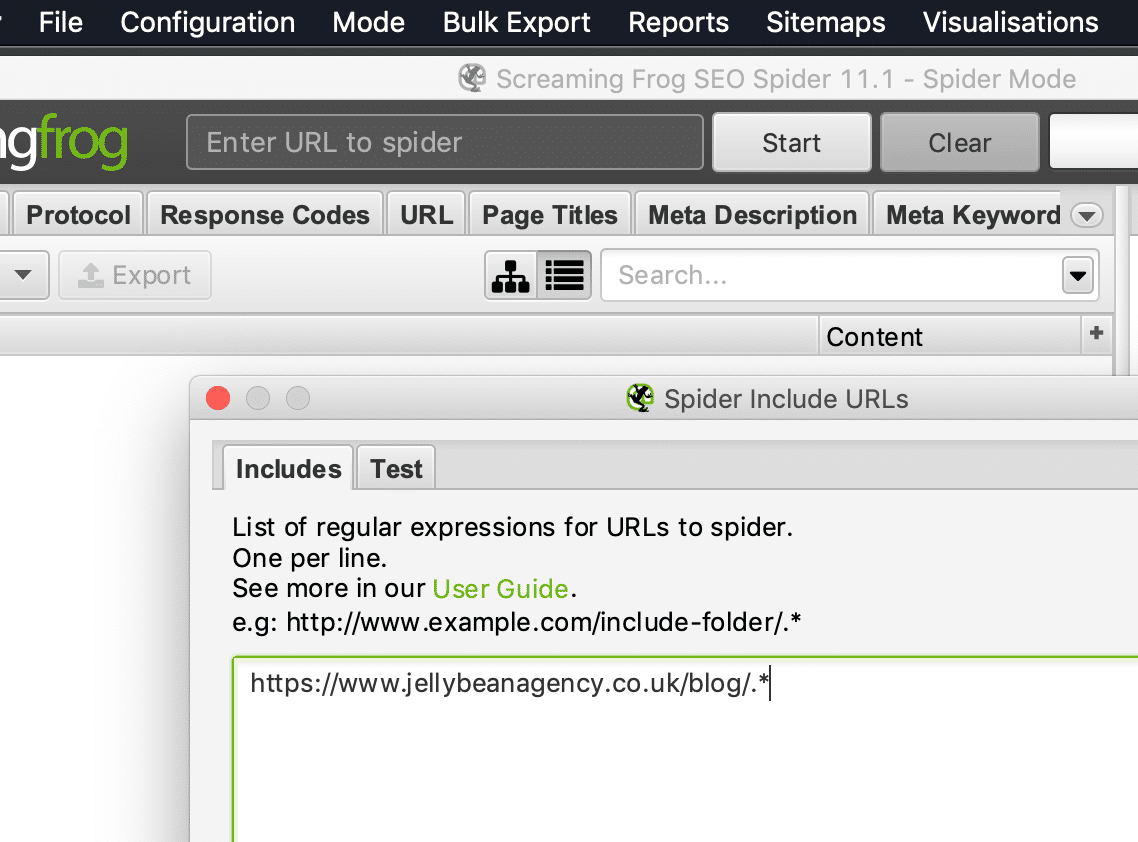Competitor linkbuilding is simply put, researching who has linked to your competitors in the past and devising how you can get them to link to you too. It’s a commonly used tactic and tends to yield strong results.
There’s a number of different tactics you can use to obtain links your competitors have achieved – we’re going to go into detail on five of our favourites:
3. Update Their Research
Thought leadership is extremely popular in a number of industries, with guides for everything from house price changes, to department budget expenditure being covered. Odds are your competitors will have created a thought leadership piece in the past – use this to your advantage by creating an updated version.
Use Majestic to find the websites which previously covered your competitor’s thought leadership piece – you want to do this at URL level, not Root Domain.

Then either manually or through a tool such as Buzzstream (particularly the Buzzmarker plugin), track down the contact details of the author. Send them your updated piece, with reference to the older article – if you’re really lucky they’ll simply update the older article and switch your competitor out for you!
A similar methodology can be applied to your infographics; however if the infographic isn’t hosted on your competitor’s website, reverse image search the graphic in Google Images to find where it’s been covered in the past. To do this, simply go to Google Images and drag and drop the image into the search bar – the SERPs will then show every website that has used the image.
2. Broken Link Building
Broken links suck, so fixing them can help not only yourself in gaining a new link, but helps the site in question to maintain a healthy site technically. Plus let’s be honest, if your competitors are foolish enough to 404 a page which has a high number of strong links to it, it’s their loss!
The easiest way to find broken links is through Screaming Frog Inlinks report. If you know the section of the website your competitors most often get links to (ie their blog or resources), then adapt the Screaming Frog crawl to only include these pages to save you digging through irrelevant pages. This done via Configuration > Include then adding the folder structure you want to crawl. Don’t forget to end it with .*

The Inlinks report will then show you any which 404. If you believe the website is relevant to you and you either have or can create content to replace the broken link, get in touch with the author and let them know!
You can again use a similar tactic if your competitor has ceased trading – use Majestic to find all their top backlinks and contact the sites where relevant to get the competitor switched for you in order to prevent the website linking out to broken pages. We recently undertook this tactic for a client and had a 50% success rate.
1. Grab Their Influencer List
Many blogger and influencer campaigns use specific hashtags, making it super easy for you to find out which bloggers and influencers you competitors are working with! This research tends to start in Instagram (so make sure you follow your competitors) as the influencer posts are likely to be re-grammed or added to stories.
Once you know the hashtag being used, search for it both on Instagram and Google to get the list of bloggers and influencers being worked with. If you’re extremely lucky, your competitors may be using influencers/bloggers to target a certain page on the site – if this is the case you can run the page through Majestic to find who’s linked to it.
From this, you then have a bank of influencers/bloggers who you know are very likely to work with your business.
Want to know more?
Let’s Not Forget The Basics
One of the easiest ways to analyse where your competitors are getting coverage and how they’re obtaining it is to set up an alert on your competitor’s brand name. This can be done for free via Google Alerts. You’ll then easily be able to understand the context behind the coverage: was it a quote, an interview, a press launch etc; helping to shape your future strategy.
Secondly, never underestimate a simple competitor backlink review. I really like to use the SEMRush Gap Analysis for this as it lays out you and your competitors side by side, showing where each site has links.
You can then break the data out further to see the exact URL the link is on. Again this helps you to understand the context behind the link.
Frequent competitor analysis will give you a strong idea of where your competitor’s priorities lie: What rankings are they trying to improve? What new products are they sourcing? Who are they working with? Use this to your advantage, we do in all our SEO strategies for clients.
Latest Blogs
Beginners Guide to Canonicalisation and URL SEO
In the multifaceted industry of digital marketing, there’s a vital concept called Canonicalisation – often overlooked but crucial for a…
Understanding and Implementing URL Redirects
The digital landscape is vast and complex, making URL redirection pivotal in ensuring users and search engines seamlessly transition to…
How Important is it to Get Your Site Architecture Right?
In the vast digital landscape, your website is more than just a virtual storefront – it’s a dynamic entity that…
Top Tips for Extracting Data from Google Search Console
In the hyper-competitive digital marketing landscape, understanding your audience’s preferences, analysing website traffic sources, and addressing technical SEO issues are…
What Are Core Web Vitals And How Can You Improve Yours?
What are core web vitals? Core web vitals are a set of user-centric metrics that assess particular aspects of user…
How to create a WordPress website
Would you like to create a website for your business or yourself? Is the thought of hiring developers and hosting…
